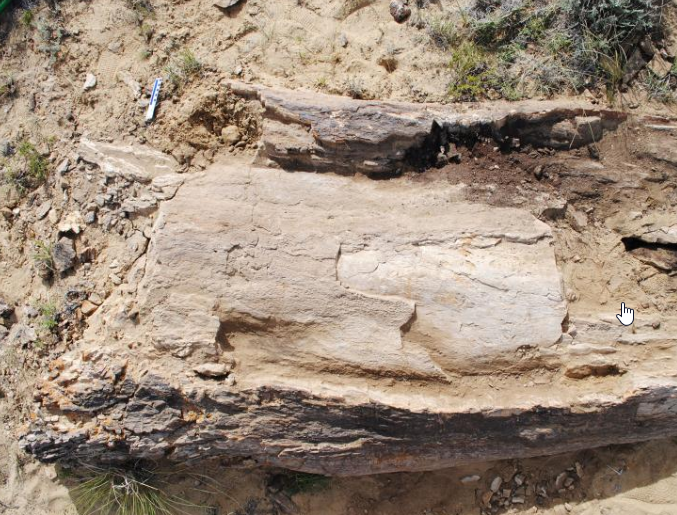
It was about 92 million years ago in what is now central Utah that a huge storm blew over a large flowering tree. The tree was washed down the river and into an ancient delta. Sediment buried part of the large tree’s trunk. It then became mineralized, preserving a fossil that’s now breaking records.
A new study was recently published in Science Advances. Researchers present evidence that flowering trees in North America are older than was previously thought. This record-breaking fossil is now a petrified log. It’s still pretty big at nearly six feet wide and 36 feet long. Researchers estimate that the tree probably stood 170 feet tall during its heyday, making it twice as tall as Utah’s tallest living tree in this day and age.
The fossil tree most likely belongs to the Paraphyllanthoxylon. This is an ancient genus known from other fossils. The strange thing is that this tree lived and died about 15 million years earlier than the next oldest North American fossils of large flowering trees, making it an amazing find.
Many experts say that the tree’s existence is no surprise and actually makes perfect sense based on the fact that flowering trees, called angiosperms, came into existence about 135 million years ago. Around 100 million years ago, small versions of these trees dominated some lowlands, and by 75 million years ago, larger flowering trees were in active existence. At the time of this tree’s life span, large flowering trees make perfect sense.
Finding fossils from this time period, known as Turonian, has proved challenging at best. The main reason is because sea levels were high during this period of time. Most Turonian sediments tell us what happened in the water, not on land. Fewer than a hundred known fragments of angiosperm wood are more than 84 million years old. Most of those samples are from small trees.
Discovering this fossil was really a matter of luck. With funding from the National Geographic Society, paleontologist Michael D’Emic went to central Utah in 2014 looking for long-necked dinosaur bones. One day, John Reay, a local US Bureau of Land Management official, gave D’Emic a tour of the area. He showed him some interesting geological features including the petrified log.
D’Emic wasn’t sure what to make of it at first. On the one hand, petrified logs aren’t uncommon in the western US, especially those from conifers. However, the log impressed D’Emic. He asked Reay if he could take samples of the log. He mailed them to paleobotanist Nathan Jud. At first, Jud thought they belonged to a huge conifer tree. However, once he examined them under a microscope, he realized the Utah log was a rare find and congratulate D’Emic by text message. The team now has follow-up studies planned, hoping to get a better picture of the history of angiosperm in North America.
We hope you enjoyed this article and invite you to search our knowledge base for more interesting information on trees.











